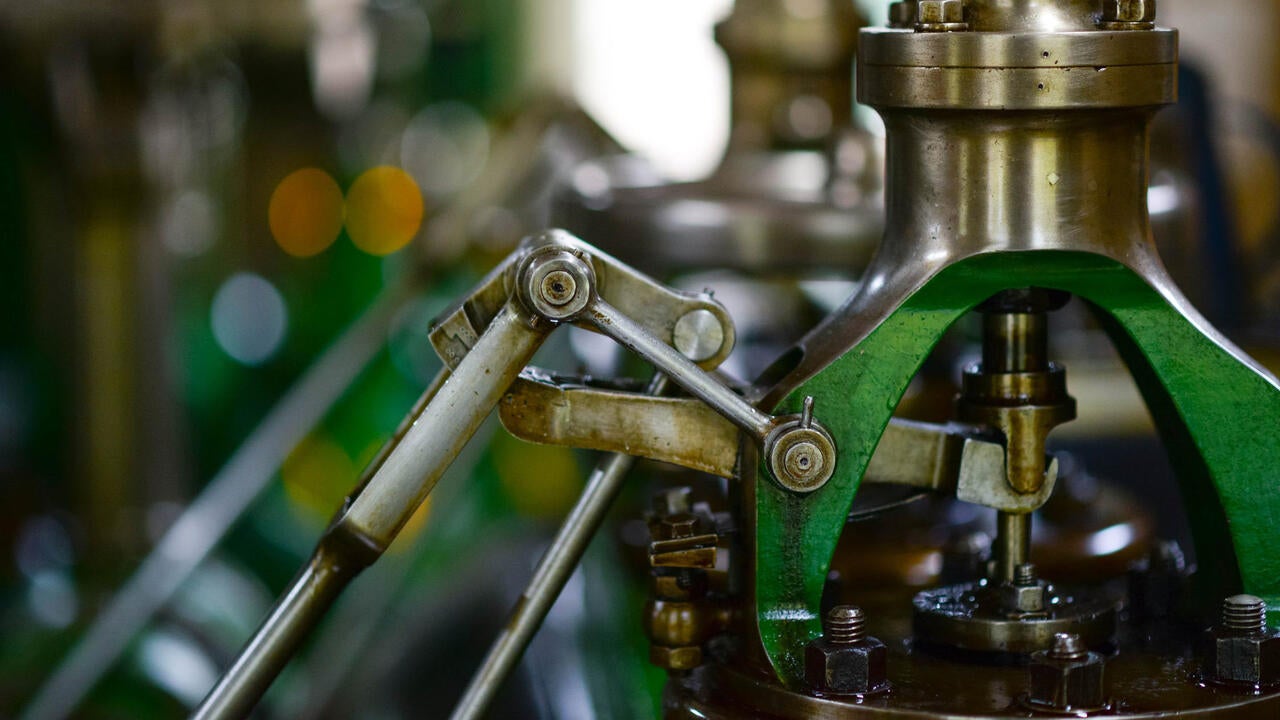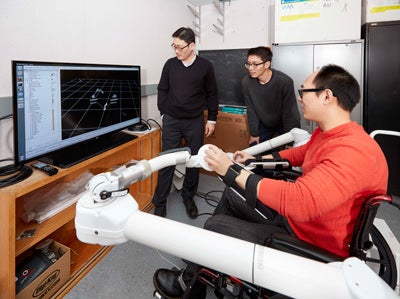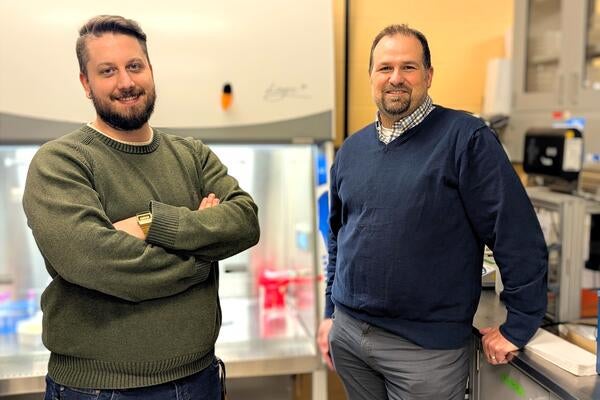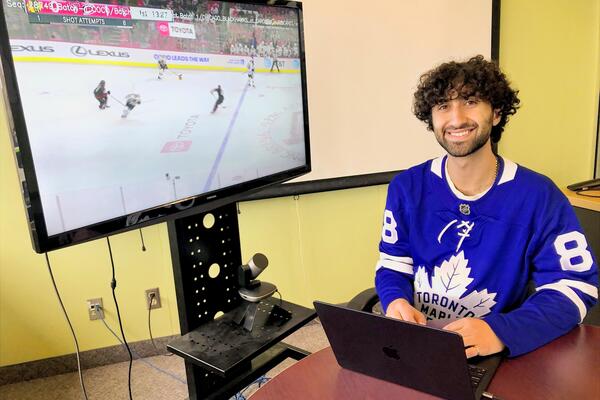
Sensory Robotics blurs lines with human capability
A professor of mechanical and mechatronics engineering at the University of Waterloo focused on finding a solution to a key issue in the burgeoning field of robotics

A professor of mechanical and mechatronics engineering at the University of Waterloo focused on finding a solution to a key issue in the burgeoning field of robotics
By Emily Lucke Faculty of EngineeringAssorted hands and arms are starting to overtake Soo Jeon’s office – but he doesn’t mind in the least.
A professor of mechanical and mechatronics engineering at the University of Waterloo, he is focused on finding a solution to a key issue in the burgeoning field of robotics.
“In terms of their hardware, progress has been good,” Jeon says. “The physical capabilities meet and exceed human capability. But robotics aren’t as advanced in perception and dexterity. The question is: how do we use sensory data to design controls in a smart way?”
As he continues the search for an answer, people outside the University are taking notice of his ground-breaking research.
In 2015, the Natural Sciences and Engineering Research Council of Canada (NSERC) awarded Jeon a $120,000 Discovery Accelerator Grant to support his work on sensory integration and motion control.
 NSERC selected Jeon for a Research Tools and Instruments Grant, which allowed him to purchase two Proficio robotic arms used in rehabilitation therapy for stroke survivors. Working with the artificial limbs, Jeon and his team discover how to design robots that can sense and manipulate objects as humans do.
NSERC selected Jeon for a Research Tools and Instruments Grant, which allowed him to purchase two Proficio robotic arms used in rehabilitation therapy for stroke survivors. Working with the artificial limbs, Jeon and his team discover how to design robots that can sense and manipulate objects as humans do.
“We are talking about designing robots that can attach to the wheelchairs of people who are paralyzed, so they can pour and drink a glass of water by themselves, for example,” Jeon says. “We need robots that can work inside homes and hospitals, and robots that can be used commercially to work alongside people, doing the more strenuous or dangerous jobs.”
According to Jeon, these applications require robots that are both agile and adaptive.
“Conventional robots work in structured factory settings, but it’s very dangerous for people to be close to those robots,” he says. “To work side-by-side with people, these robots will have to be able to sense a person approaching or an object showing up in the workspace, and then adapt accordingly. Designing these control techniques is the challenge.”
One of the ways Jeon is tackling these challenges is by working with researchers outside of the mechatronics engineering department.
A colleague, James Tung, introduced him to Waterloo kinesiology professors Michael Barnett-Cowan, Eric Roy and Ewa Niechwiej-Szwedo, and they are helping him understand why humans are so dexterous compared to robots.
“As babies, we learn how to control our hands and manipulate objects, and then we store that learning in our memory,” Jeon says. “From then on we are able to more or less instantly estimate the properties of objects around us and manipulate them. This process isn’t easy to replicate in robotics.”
Although the work ahead of him will be challenging, Jeon says he is confident he’s in the right place to do it.
“The University of Waterloo values and promotes innovation,” he says. “Being here allows me to focus on my work, teach my students and make progress on my research.”

Read more
Engineering researchers team up to tackle the plastics pollution problem with microbial innovation and engineering design

Read more
15 University of Waterloo researchers have been named to the annual Highly Cited Researchers™ list for significant contributions to their specific fields of research

University of Waterloo Engineering master's student Liam Salass developed an AI-based system that improved puck detection when analyzing game video. (University of Waterloo)
Read more
University of Waterloo researchers make big strides in hockey analysis using game video
Read
Engineering stories
Visit
Waterloo Engineering home
Contact
Waterloo Engineering
The University of Waterloo acknowledges that much of our work takes place on the traditional territory of the Neutral, Anishinaabeg, and Haudenosaunee peoples. Our main campus is situated on the Haldimand Tract, the land granted to the Six Nations that includes six miles on each side of the Grand River. Our active work toward reconciliation takes place across our campuses through research, learning, teaching, and community building, and is co-ordinated within the Office of Indigenous Relations.